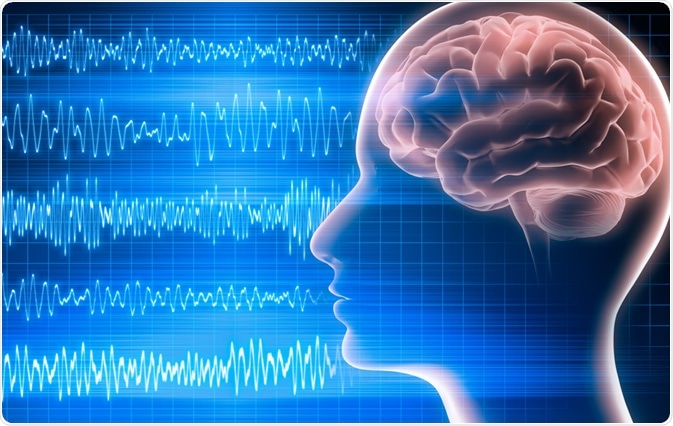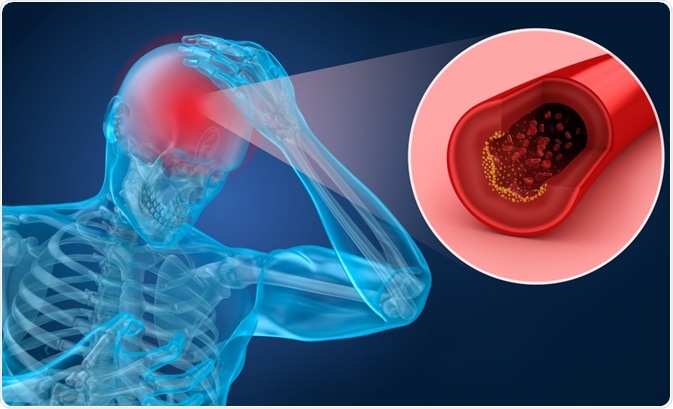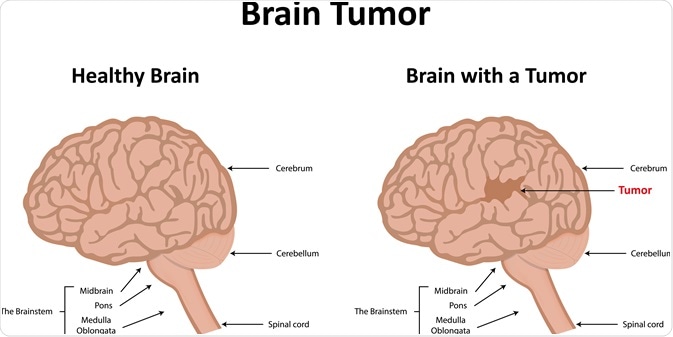By Afsaneh Khetrapal BSc (Hons)
West Syndrome is characterized by infantile spasms, developmental reversion, and a specific chaotic brain activity pattern called hypsarrhythmia.
The definitive pathophysiology of the syndrome still remains unclear. One hypothesis proposes a dysregulation of the GABA transmission process whilst another suggests elevation in the production of corticotropin-releasing hormone (CRH) is responsible. Both of these hypotheses are supported by the effect of pharmacological treatments devised for the syndrome.
West syndrome can be classified as symptomatic, cryptogenic, or idiopathic.
 One of the characteristics of West Syndrome is a specific chaotic brain activity pattern called hypsarrhythmia. Image Credit: peterschreiber.media / Shutterstock.com
One of the characteristics of West Syndrome is a specific chaotic brain activity pattern called hypsarrhythmia. Image Credit: peterschreiber.media / Shutterstock.com
Symptomatic West Syndrome
Symptomatic West syndrome is diagnosed when a cause has been determined as responsible. Between 70-75% of patients with West syndrome are diagnosed with this form and virtually any disorder that can produce brain damage can be an underlying cause. These causes are divided into prenatal, perinatal and postnatal disorders, some of which are listed below.
Prenatal conditions
- Hydrocephalus
- Microcephaly
- Genetic syndromes (such as Down’s syndrome)
- Hypoxia or ischemic brain damage
- Congenital infections
Perinatal disorders
- Hypoxia or brain ischemia
- Meningitis
- Encephalitis
- Intracranial hemorrhage
Postnatal disorders
- Pyridoxine dependency
- Phenylketonuria,
- Meningitis
- Biotinidase deficiency
 Problems with the brain's blood vessels like brain ischemia and intracranial hemorrhage can cause West Syndrome. Image Credit: Alex Mit / Shutterstock.com
Problems with the brain's blood vessels like brain ischemia and intracranial hemorrhage can cause West Syndrome. Image Credit: Alex Mit / Shutterstock.com
Cryptogenic West Syndrome
A diagnosis of Cryptogenic West syndrome is made when there are no apparent causes identified in a child with developmental delay or another cognitive impairment before the onset of infantile spasms. The incidence of cryptogenic cases ranges greatly from 8-42%. This might be explained by variations in the definition of the term cryptogenic and the age of patients at diagnosis because the assessment of developmental level is difficult to do in early infants.
Idiopathic West Syndrome
Patients are diagnosed with Idiopathic West syndrome when they have normal psychomotor development prior to the onset of spasms. They also present with no abnormal findings during any form of examination and there is no evidence of a presumptive trigger for the spasms. The percentage of idiopathic cases is approximately 9-14% however fewer children are being diagnosed with this form due to advances in medicine.
 Tuberous sclerosis complex (TSC) is a rare, autosomal dominant genetic condition that is known to cause the growth of benign tumors in the brain and other organs. It is also a major symptomatic cause of infantile spasms. Image Credit: joshya / Shutterstock.com
Tuberous sclerosis complex (TSC) is a rare, autosomal dominant genetic condition that is known to cause the growth of benign tumors in the brain and other organs. It is also a major symptomatic cause of infantile spasms. Image Credit: joshya / Shutterstock.com
Genetic Predisposition
Tuberous sclerosis complex (TSC) is a rare, autosomal dominant genetic condition that is known to cause the growth of benign tumors in the brain and other organs. It is also a major symptomatic cause of infantile spasms; up to 50% of patients with TSC eventually present with infantile spasms at 4 - 6 months of age.
The ARX gene and CDKL5 gene – known to have a role in normal brain development and function - have been shown to cause the early onset of infantile spasms when mutated. This form of the disorder is called X-linked West syndrome because these genes are present on the X chromosome.
West syndrome due to a mutated ARX gene is inherited in an X-linked recessive manner. While one mutated copy of the gene in each cell is sufficient to induce the syndrome, males are more severely afflicted than females who may have a healthy copy of the gene on their second X chromosome.
On the other hand, a mutated CDKL5 gene is inherited in an X-linked dominant manner. This means one mutated copy of the gene in each cell is sufficient to cause the syndrome with equal severity in males and females.
Understanding Infantile Spasms - Symptoms, Diagnosis & Research
References
Further Reading